How Often to Replace Kids’ Shoes — Let’s Keep Your Kids’ Feet Healthy!
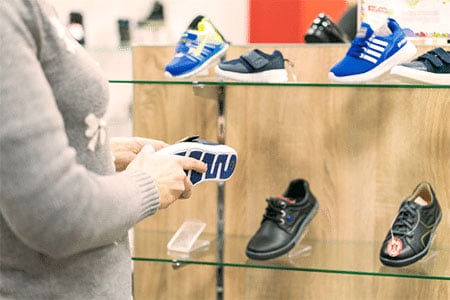
I am going to show you exactly when is the right time to replace your kids’ shoes based on my experience of having fitted children’s shoes for the last 10 years. I measure hundreds of different children for shoes each month, and over the years I became familiar with how often children’s shoes should be replaced. It is a fact that children of the same age grow at different rates, so my guidelines below should be used as an estimate of how often you should replace your kids’ shoes.
Ages One to Three — Replace Shoes 3 to 4 Times a Year
Children between the ages of 1 to 3 should have their shoes replaced every 3 ½ to 4 months.
This is the time when children grow at the fastest rate. Because the child’s feet are growing so fast, they always outgrow the shoes before they wear them out. However, this doesn’t mean that you shouldn’t invest in high-quality shoes for your toddler.
Buying low-quality or poorly fitting shoes at this stage can create several issues for your toddler’s feet, and your child might not have the vocabulary to express discomfort.
I know some families might be tempted to hand down shoes at this stage, considering how fast the child’s feet grow. I strongly advise against this as hand-me-down shoes tend to mold into the shape of the child’s feet who wore them before. In addition, bacteria and fungus tend to thrive within the materials of older, used shoes.
Ages Four to Eight — Replace Shoes 2 to 3 Times a Year
Children between the ages of 4 to 6 should have their shoes replaced every 4 ½ to 5 months.
You will notice more wear and tear during these ages as the child is a lot more active. Look for shoes that provide supportive and slip-free outsoles, ankle support, arch support and comfortable insoles. The shoes need to be lightweight and flexible at the same time.
Ages Nine to Twelve — Replace Shoes 2 Times a Year
Children between the ages of 9 to 12 should have their shoes replaced every 5 months.
At this stage your child might wear the shoes out before outgrowing them, so you need to keep a close eye on your child’s footwear. I will describe common signs of wear and tear shortly.
Children between these ages might be involved in competitive sports and will require specific sport shoes.
Teenage Years — Replace Shoes 1 to 2 Times a Year
Teenagers should have their shoes replaced every 6 months to a year.
As feet growth stabilizes, I recommend buying different shoes for different activities with features to complement the purpose.
Unless children complain that their feet are uncomfortable, most parents may not know when it’s time to replace the shoes. It’s a good idea to periodically inspect your children’s shoes to make sure what they are wearing is still working for them.
Do You Have a Specialized Children’s Shoe Store in Your Area?
I always recommend parents visit their local shoe stores where a shoe fitter can effectively check whether the child is ready for new shoes. The issue is that most specialized children’s shoe stores have been closing down, so I created a resource that describes the best-fitting children’s shoe stores by state.
Keep in mind that big retail stores such as Nordstrom or Payless don’t qualify as “shoe fitting stores”. Unfortunately, these stores don’t have employers trained on how to properly fit children for shoes.
If after looking at that map you still can’t seem to find a good shoe store in your area I suggest that you follow the guidelines below where I show parents the most common signs that the child might be ready for a new pair of shoes.
When to Replace Your Kids’ Shoes 101: Signs of Wear and Tear
There will be obvious times in which you will know it’s time to replace your kids’ shoes as you will notice visible signs of wear and tear. However, I know some families might be skeptical of replacing their kids’ shoes if the child still has growing room. Just the other day this family came to the store asking me if I thought the child was ready for new shoes. I looked at the shoes and they were completely destroyed, but the family still needed reassurance on whether this was a good time to replace the shoes. Take a look at the image of the shoes so you can draw your own conclusions:
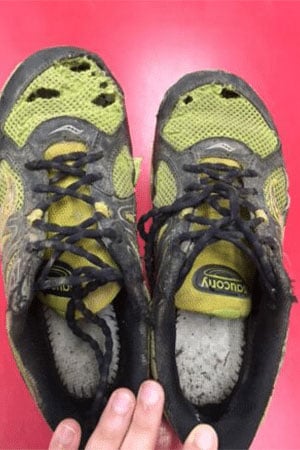
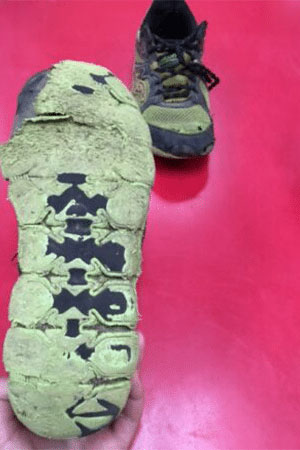
Some signs of wear and tear are normal, but when your kids’ shoes look destroyed or are missing the original insoles I strongly suggest that you replace them. When shoes are missing the original insoles it can lead your child to develop blisters and calluses from the constant friction between the feet and the outsole of the shoes.
If you notice some wear and tear on the top side of the shoes that’s okay, you don’t need to replace the shoes because of that. This simply means that the child is not undoing the velcro strap or the shoelaces and it’s removing the shoes with his or her opposite foot.


Use your parenting good judgment to determine when it’s the right time to replace your kids’ shoes due to wear and tear.
When to Replace Your Kids’ Shoes 101: Outgrown Shoes
If your child is complaining of foot pain or you noticed that your child has been wearing the shoes for longer than you expected (based on my guidelines above), then it’s time to replace your kids’ shoes.
If you can’t visit your local shoe store there is an effective way you can check whether your child has outgrown the shoes or not.
Start by removing the original insoles of the shoes and have your child stand on them. Make sure that your child’s heels are aligned with the back of the insoles and that your child is standing straight and looking straight ahead.
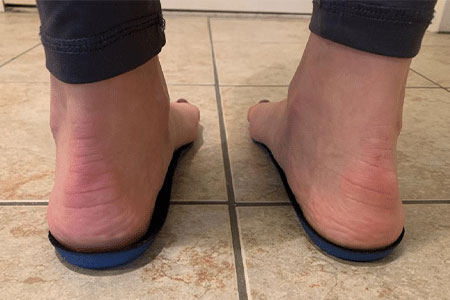

Check whether your child’s toes are matching the end of the insoles or not. The first picture shows a child standing up in the insoles and we can clearly see there is still growing room. As a standard rule of thumb, we always want to allow 0.3 inches or 0.7 centimeters of space between your child’s longest toe and the end of the shoes.
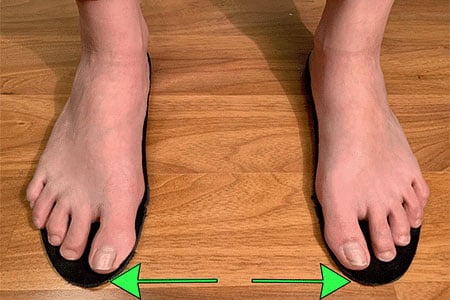
Keep in mind that your child’s longest toe doesn’t necessarily have to be the big toe, it can be the second or even the third toe. Notice how the left foot is longer than the right one — that’s why it’s always important to check both feet.
This second picture shows the same child but in this case, the toes are all the way up at the end of the insoles, which means that it’s time to get new shoes.
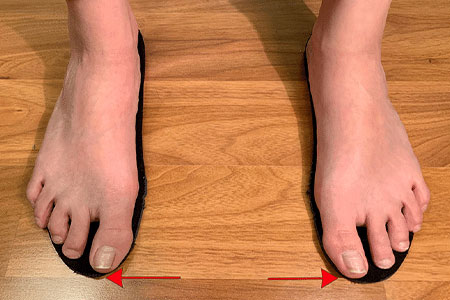
If you are unsure whether your child has growing room left in his or her shoes don’t hesitate to reach out to me and I will help you figure this out:
Additional Resources I Have Created Throughout the Years
I am going to leave you with a couple of articles that might come in handy such as how much growing room you should leave inside your kids’ shoes and where you can find high-quality shoes at affordable prices. I know some parents try to provide their children with extra growing room inside the shoes hoping for the child to wear the shoes longer. However, wearing a pair of shoes that is too large is harmful and could lead to falls, slips and accidents.
Final Words of Advice — Regularly Inspect Your Kids’ Shoes
I strongly encourage parents to periodically inspect their children’s shoes. I have heard many stories of parents finding sharp objects inside their kids’ shoes. Just recently this family found a loose nail inside their kids’ boot that they bought from a different store:
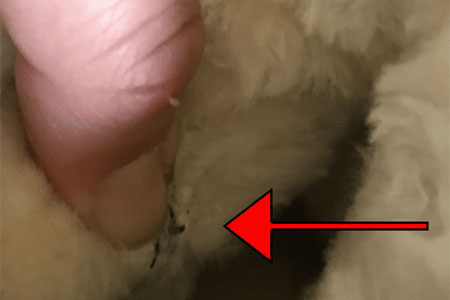
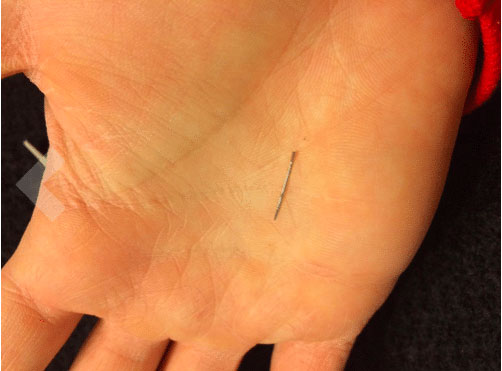
Best Way to Prevent Your Child from Developing Foot Issues
Wearing shoes in the wrong size is the most common cause of why children develop foot issues and foot pain.
Making sure that your child is wearing the correct shoe size helps prevent foot issues such as blisters, calluses, and corns. In addition, some children complain about foot pain from wearing shoes that are too small or too narrow.
I always tell parents that their kids’ shoes are more for function and less for fashion. However, it’s always possible to find a stylish shoe that fits the shape of your child perfectly.
Do not hesitate to contact me if you need help finding a specific pair of shoes for your child. It doesn’t matter how narrow or wide your child’s feet are, I will help you find the perfect pair of shoes. Feel free to share your own experiences in the comment section below. It will be helpful to know how often you replace your kids’ shoes based on your child’s age.

